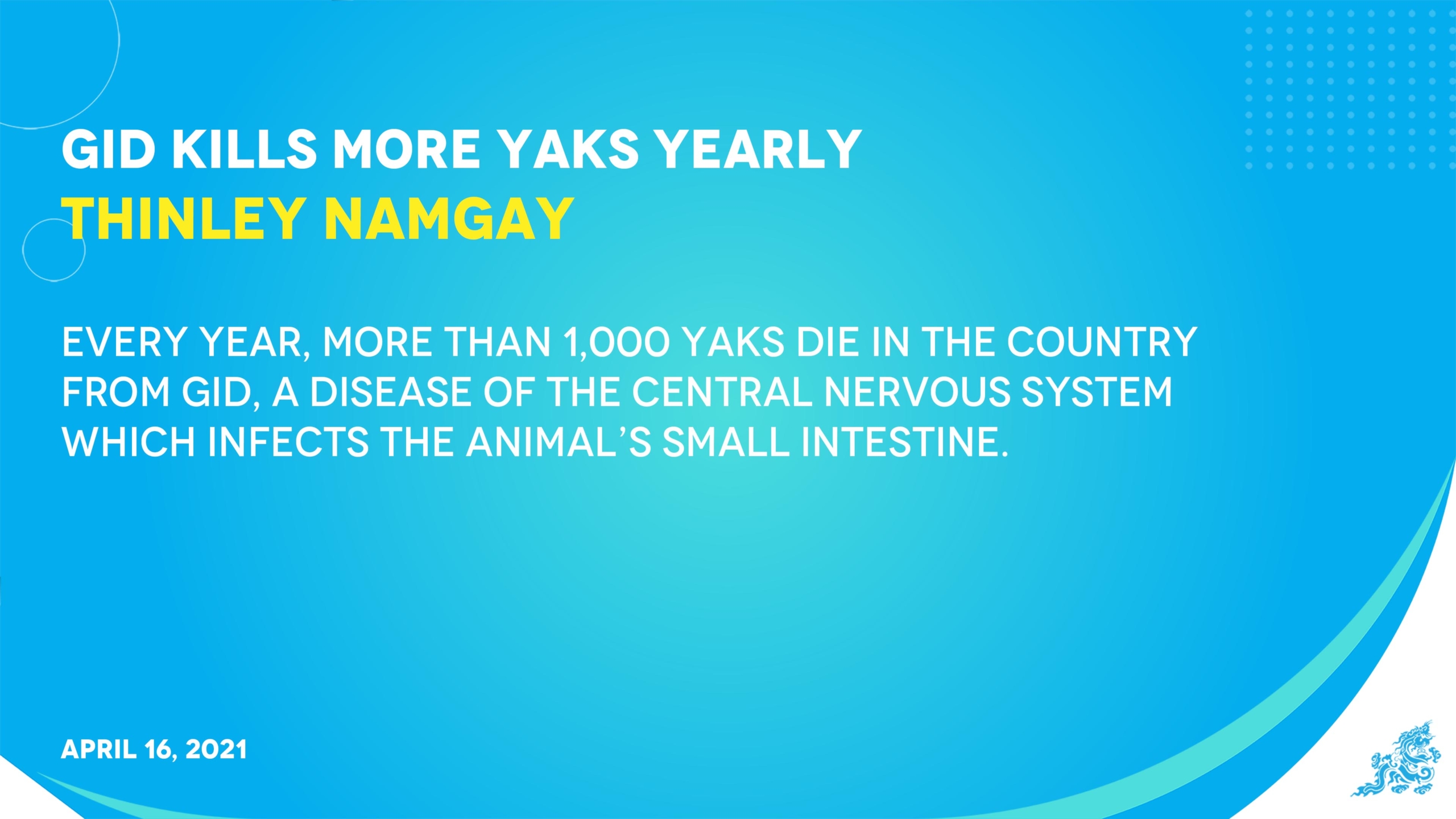
Thinley Namgay
More than 1,000 yaks die in the highland communities every year due to the gid disease, as per the record of the National Highland Research and Development Centre (NHRDC).
In the last three years, Lingzhi alone lost more than 300 yaks to gid. The situation is similar in most of the highland communities.
Locally known as guyoom, gid is a disease of the central nervous system caused by the larval stage of the tapeworm taenia multiceps, which infects the animal’s small intestine.
Local leaders claimed that stray dogs were the primary source of the disease. The virus affects the brains of young yaks, aged one to three years, and kills them painfully.
The disease is transmitted to yaks when they feed on the grass contaminated by faecal matter of dogs containing parasites. Another reason could be dog bite.
If the parasite affects the left part of the brain, animals turn around in the left. Sometimes, some animals fall from the precipice when they turn around in severe condition.

Lingzhi Gup Wangdi said that if 20 calves are born, nearly 50 percent of them die before three years. “Stray dogs population is increasing in highland communities. A minimum of 100 yaks die every year,” Wangdi said.
The disease has been affecting the young yak population since 1950s.
Soe Gup Kencho Dorjee said that in the last three to four years, almost 25 percent of the yaks were affected in his gewog.
Naro Gup Wangchuk said that the disease affected almost three yaks in every household in the gewog every year.
Of the 73 households at Naro, 25 are yak herders.
Thimphu Dzongkhag’s Deputy Chief Livestock Officer, Kul Bahadur Gurung, said that a group of health officials are currently in highland communities to study the disease.
The disease was also discussed in the recent Thimphu Dzongkhag Tshogdu. Members decided to tackle it by providing extra medicine and further investigation.
Gid focal person from the NHRDC in Bumthang, Yeshi Wangdi, said the disease was most prevalent in Thimphu, Paro, Haa, Gasa, Wangdue, and Bumthang. “More than 1,000 yaks die every year in the country as per our record.”
He said that livestock department plan to eliminate the gid disease in yaks by 2025 with measures such as registration of Bhutanese mastiff dogs in the highlands with free distribution of Bhutanese Mastiff Health Book, strategic deworming of watchdogs four times a year, and deworming of yaks twice a year.
Other methods include sensitisation of relevant stakeholders for their collaborative response and ownership deployment and advocacy programme through visual deworming demonstration.
So far, the NHRDC has dewormed over 82 yaks from Thimphu and Bumthang. Faecal samples of 87 dogs were collected. A sensitisation programme was conducted for 103 households of Thimphu and Bumthang.

